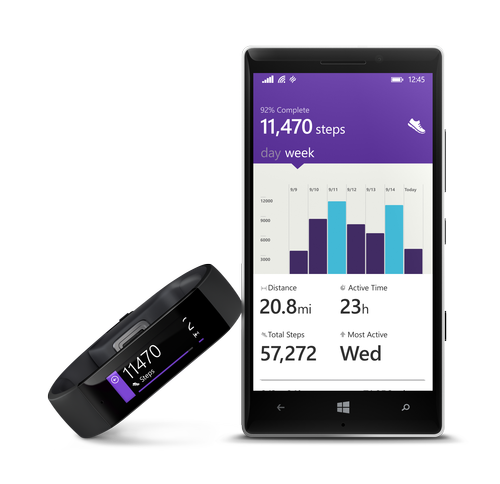Is the Microsoft Band Too Late to the Wearables Party?
November 5, 2014

With all the major tech companies either releasing or investing in wearables it was only a matter of time before Microsoft got in on the game. Last week the software giant released Microsoft Band a bit under the radar. There was none of the fanfare that accompanied Samsung's Galaxy Gear, Google's Android Wear, or the highly anticipated Apple Watch, but for those of us following the space there might not be much reason to get excited.

Consumers familiar with wearable products will find all the usual suspects (heart rate, sleep, calories, ect.) are present in the Microsoft Band in addition to the typical smartwatch features (essentially putting your smartphone on your wrist). The band has 10 sensors crammed into its 18.5-mm frame including GPS, a gyrometer, a 3-axis accelerometer, ambient light sensor, skin temperature sensor, capacitive sensor, UV sensor, galvanic skin response, and a built-in microphone -- all giving a lot of potential for interesting applications if creative developers embrace the Band's SDK and API.
Perhaps most interesting is the band's optical heart rate sensor which uses light to track blood flow, rather than measuring electrical pulse. It's built from the same technology behind Microsoft's Kinect sensor for the Xbox ONE video game console. When the Xbox ONE was released Microsoft announced the new Kinect would be capable of detecting heart rate — ostensibly for use in fitness games.
But where Microsoft hopes it can get a leg up is in the Wild West that is digital health. The Microsoft Band is just a small piece of the Microsoft Health platform that the company has also unveiled. More than just an app to collect and aggregate health data, Microsoft wants its health platform to give users actionable insights into their personal health and fitness. The cloud-based service will collect data from the Microsoft Band, and other wearable devices, and over time will use an “Intelligence Engine” to provide various user insights including which exercises burned the most calories during a workout, recommendations on recovery time, and reports on sleep quality. Microsoft Health will also sync with your email and calendar to help you schedule your day and even plan meals to optimize your workouts. As of launch the company has announced the platform will be compatible with UP by Jawbone, MapMyFitness, MyFitnessPal, and RunKeeper. Microsoft has also announced partnerships with Gold’s Gym, Shape, Men’s Fitness, and Muscle & Fitness to create workout programs for its users. “We plan to have a regular cadence of Microsoft Health announcements including additional device and service partnerships, SDK availability, and additional cross-platform applications and services,” Microsoft corporate vice president Todd Holmdahl wrote in a blog on Microsoft's website.
Related articles on DesignNews.com
Google, Apple, and others have already made big plays into the digital health space with their own wearable devices. Samsung has even started its own digital health initiative with the purpose of investing in new wearable technologies for healthcare and developing a modular wearable solution for tracking health. For their part Google and Apple have played a bit of tit for tat in the health platform game with AndroidFit and HealthKit respectively, but Apple seems most committed to delving into the digital health space beyond surface-level fitness tracking and into actual healthcare outcomes. The company has announced partnerships with some big names like Mayo Clinic around HealthKit.
For what it's worth, with all of these products new on the shelves for the 2014 holiday season we won't see any real numbers on sales and consumer adoption until sometime in 2015. While it's not impossible for Microsoft to win out over the long-term it seems highly unlikely given the efforts by competitors. Yes it has beaten the Apple Watch to market, but if Microsoft expects Android and iOS users to use Microsoft Band with the Apple Watch and plethora of Android-compatible smartwatches already out there, they've got their work cut out for them. Heck, the Apple Watch even comes in gold.
Of course there are still challenges ahead all around. A 2014 white paper by Endeavour Partners showed that a third of US consumers stop using their activity trackers altogether within six months and that wearables have failed to drive long-term user engagement up to this point. However, a report released in September by CB Insights has shown investment in wearables at an all-time high, with venture investment expected to break the $1 billion mark this year.
Who do you think will come out on top of the wearables market and how? Let us know in the comments section below.
About the Author(s)
You May Also Like

.jpg?width=300&auto=webp&quality=80&disable=upscale)

